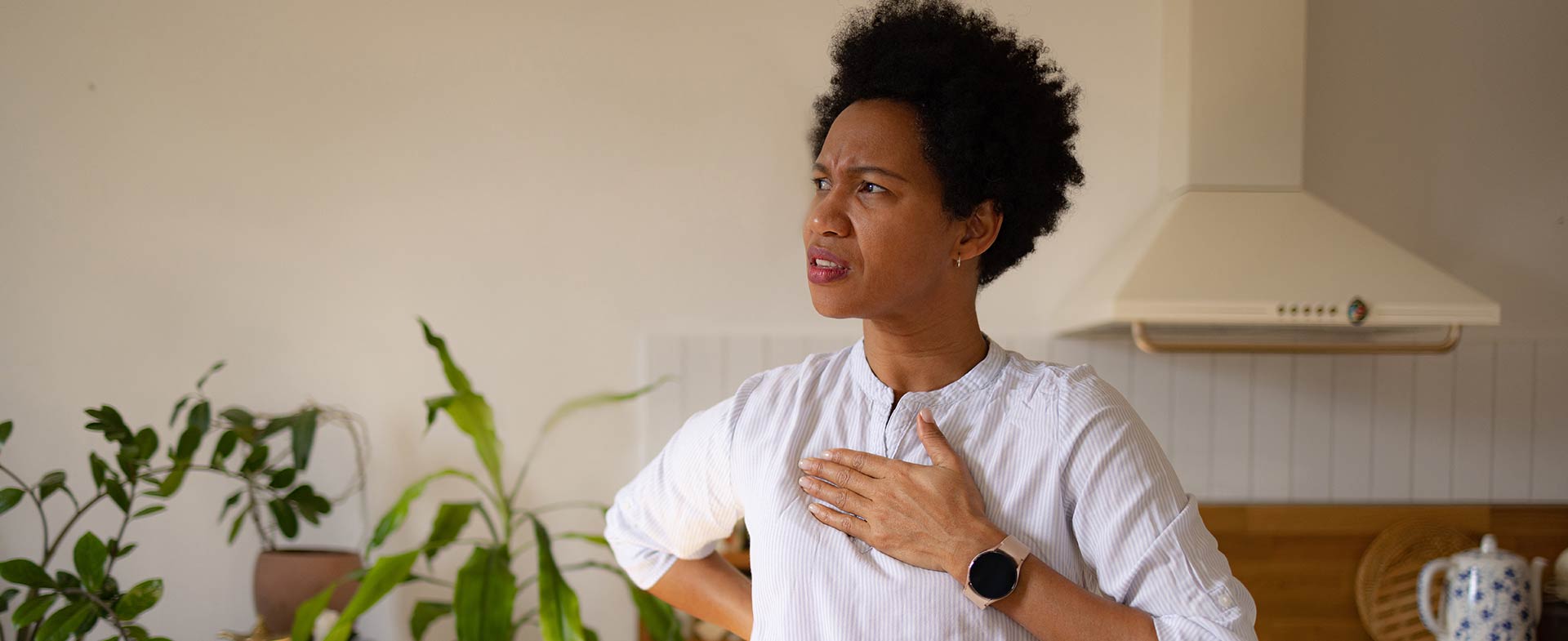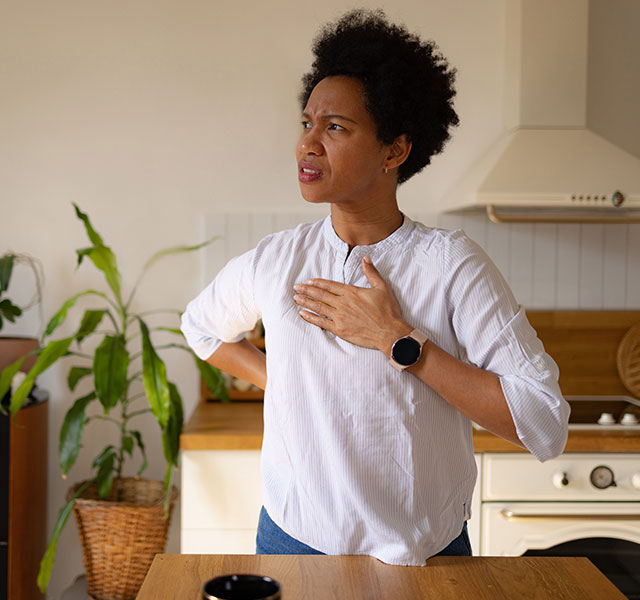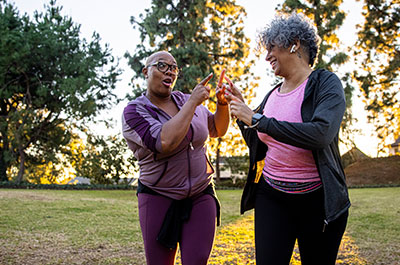While heart disease remains the leading cause of death in the United States among men and women, many people are unaware that heart attack symptoms in women may look very different compared to symptoms in men, resulting in women delaying medical care or ignoring signs when having a heart attack.
A common misconception about heart attacks is that the symptoms are very painful, noticeable and impossible to ignore. And while what you’ve seen in movies and on TV may confirm that, Ryhm Radjef, M.D., a cardiologist at Henry Ford Health, notes this isn’t always the case. Especially among women.
Heart Attack Symptoms In Women

Women's Heart Center
A heart attack can happen at any time and can feel differently to everyone. Most commonly, patients report chest pain that is central and feels like a pressure, squeezing or heaviness.
“In women, this pain can be felt more in the upper abdomen, left side of the chest and in the throat,” says Dr. Radjef. “This pain often is also associated with other symptoms such as fatigue, nausea, sweating or shortness of breath.”
Since these symptoms can seem vague, some women may be inclined to dismiss them. In fact, studies have found that many women don’t recognize these symptoms as a possible sign of a heart attack. Or, out of fear of overreacting, have dismissed their symptoms as the result of a bad night’s sleep or acid reflux.
Dr. Radjef stresses that if you are experiencing any of these symptoms (whether you have heart disease or any heart disease-related risk factors or not) it is important call 911 or seek medical attention immediately.
How Women Can Prevent Heart Attacks
Better educating women about the possible signs of a heart attack and what you should do if you think you may be having one are also critical.
Here, Dr. Radjef shares her advice for women so they can lower their chances of a heart attack or even prevent one in the first place:
- Be aware of your risk factors. Having high blood pressure or diabetes can increase the likelihood of a heart attack in men and women. However, for women, your history of menopause or pregnancy complications can impact your risk as well.
- Eat healthy. Cutting back on foods that are high on fat and sodium can help lower your risk of diabetes and obesity. Make it a habit to prioritize lean proteins, whole grains, fruits and vegetables instead of ultra-processed foods.
- Exercise regularly. Not only does an active lifestyle help strengthen your heart and improve blood flow, but it can also help you lower your blood pressure.
- Stop smoking. Smoking damages blood vessels in the body, increasing the likelihood of plaque buildups which can contribute to a blockage and possible heart attack. In addition to avoiding smoking, second and third hand smoking also comes with its risks to your health.
- Know your numbers. Work with your primary care provider and cardiologist to make sure that you are managing your blood pressure, cholesterol and blood sugar levels. Remember, diet and exercise may not be enough to bring these levels within a healthy range. If you doctor is concerned with your numbers, talk with them about exploring your options of management with medication.
Reviewed by Dr. Ryhm Radjef, Director for the Women's Heart Center and Cardio-Obstetric Program at Henry Ford Health.



